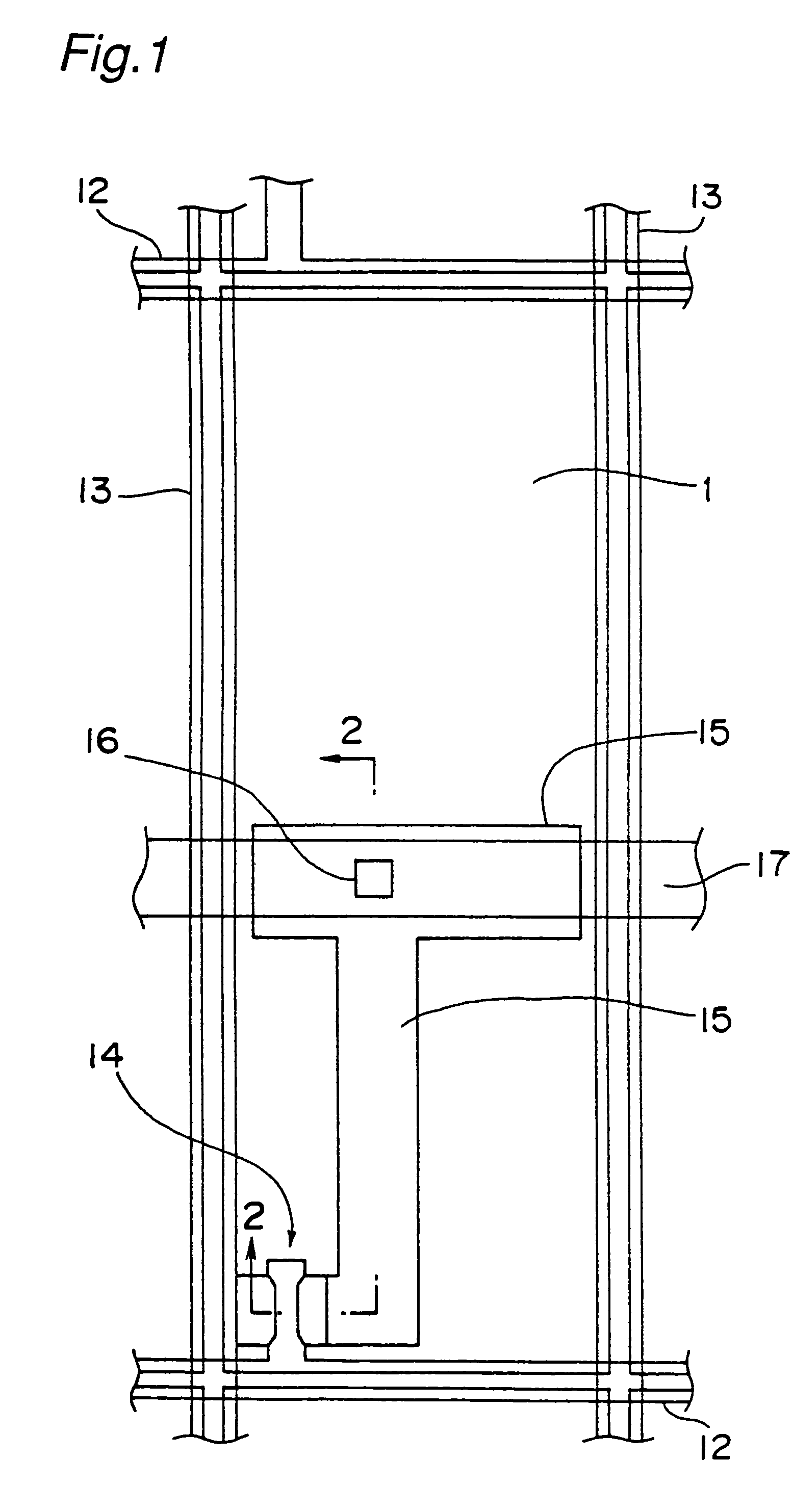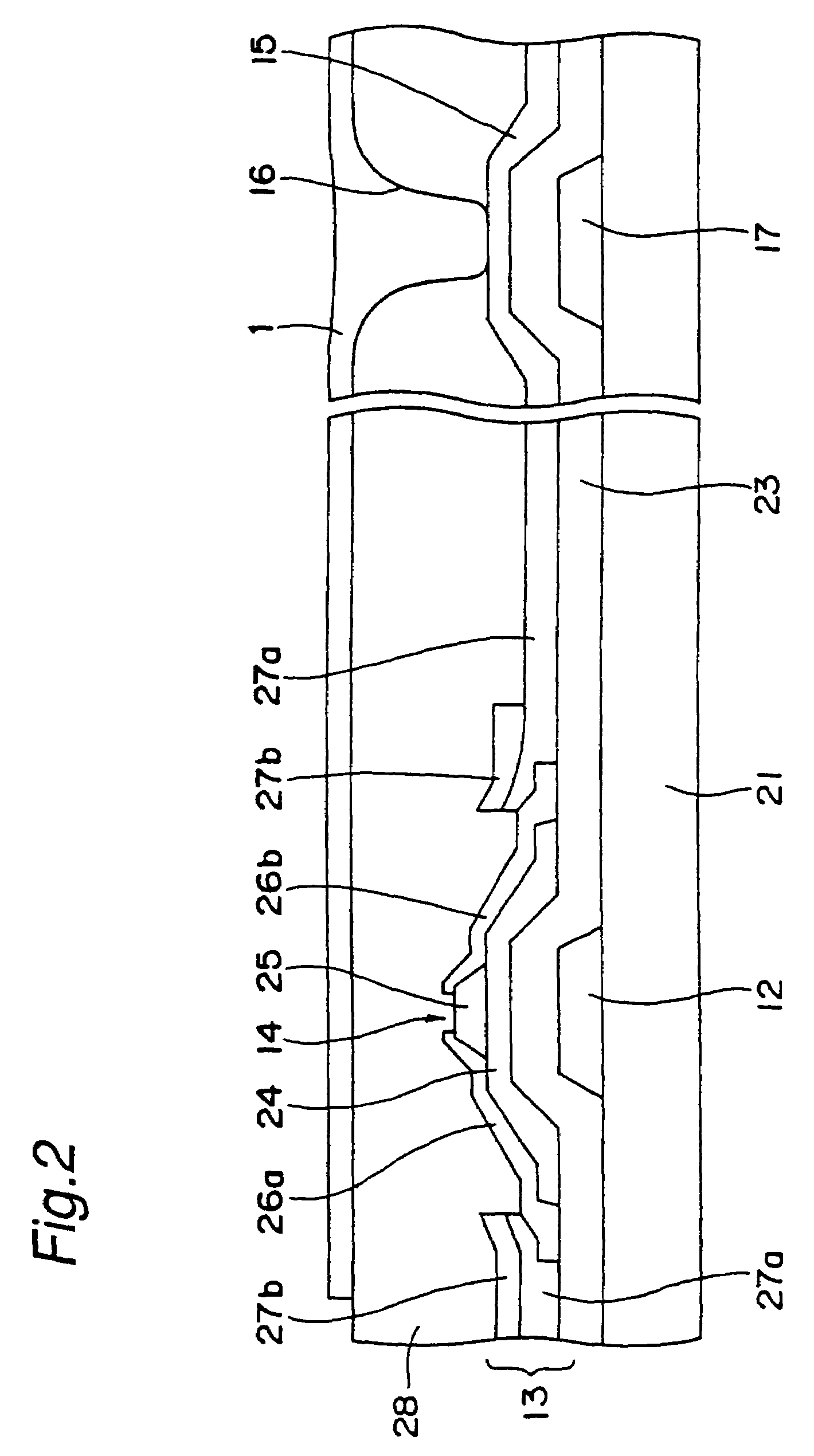Method of making active matrix substrate with pixel electrodes of photosensitive conductive material
a technology of photosensitive conductive material and active matrix substrate, which is applied in the direction of radiation control devices, identification means, instruments, etc., can solve the problems of affecting leakage failures, and hindering the photo resist of the attached area, so as to shorten the fabrication process of the pixel electrode and improve the exposure precision
- Summary
- Abstract
- Description
- Claims
- Application Information
AI Technical Summary
Benefits of technology
Problems solved by technology
Method used
Image
Examples
Embodiment Construction
[0045]The embodiments of the present invention will be described hereinafter with reference to drawings.
[0046]FIG. 1 is a plan view showing one pixel extracted from the pixels disposed in the shape of a matrix on an active matrix substrate as one example of the present invention, and FIG. 2 is a cross sectional view taken on the line 2—2 of FIG. 1. Except that the material and fabrication method of a pixel electrode is different, the active matrix substrate has the same configuration as the prior art shown in FIGS. 7 and 8, so that like component members are designated by like reference numerals.
[0047]The active matrix substrate is composed of: gate signal lines 12 placed on a light permeable substrate 21 along the lower side of a rectangle shown in the plan view and sending signals to a gate of a TFT 14; capacity lines 17 placed on the light permeable substrate 21 and positioned crosswise in the center of the rectangle of the plan view; a gate insulating film 23 covering the lines ...
PUM
| Property | Measurement | Unit |
|---|---|---|
| particle size | aaaaa | aaaaa |
| temperature | aaaaa | aaaaa |
| temperature | aaaaa | aaaaa |
Abstract
Description
Claims
Application Information
 Login to View More
Login to View More - R&D
- Intellectual Property
- Life Sciences
- Materials
- Tech Scout
- Unparalleled Data Quality
- Higher Quality Content
- 60% Fewer Hallucinations
Browse by: Latest US Patents, China's latest patents, Technical Efficacy Thesaurus, Application Domain, Technology Topic, Popular Technical Reports.
© 2025 PatSnap. All rights reserved.Legal|Privacy policy|Modern Slavery Act Transparency Statement|Sitemap|About US| Contact US: help@patsnap.com



